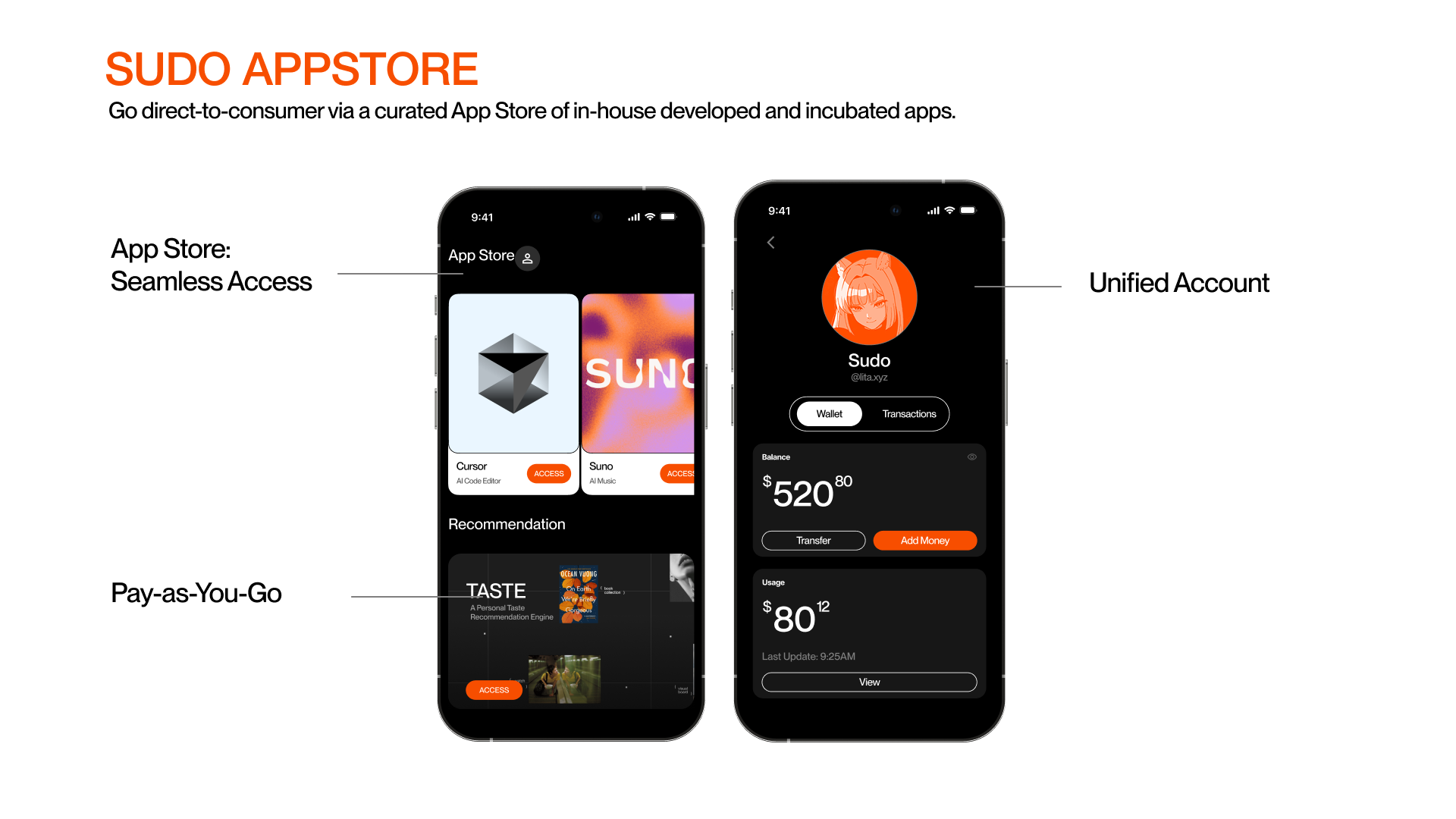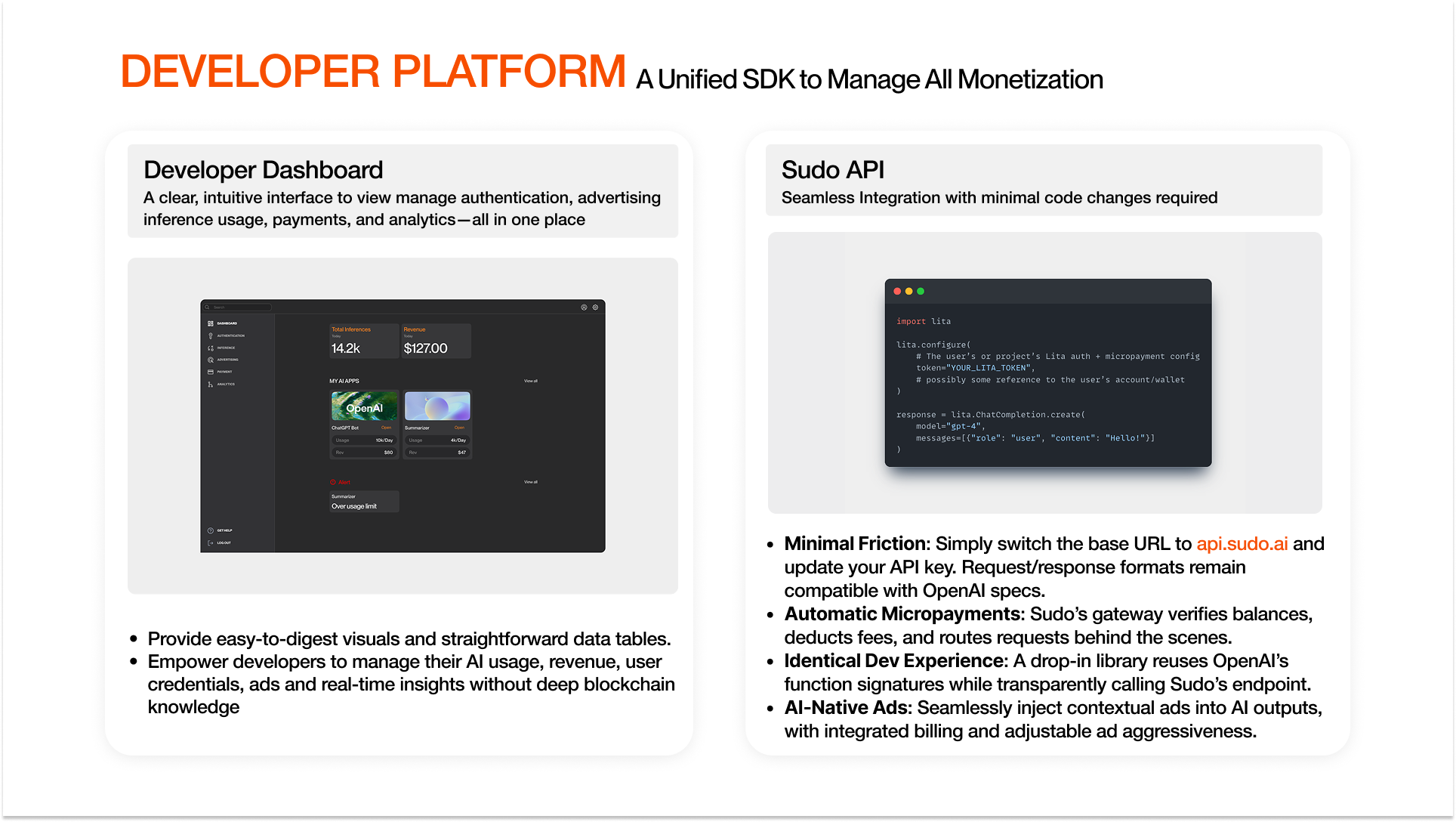05.31.2025
Building Sudo: Our Thinking on AI Economics and Platform Design
AI product notes series 1
Ventali Tan
We've been thinking deeply about the economics of AI applications and where the industry might be heading. These are some of the observations and hypotheses that are shaping how we're approaching Sudo.
The Economics Don't Add Up (Yet)
One thing that struck us early on: the marginal cost of software has fundamentally shifted. Traditional software had near-zero marginal costs once built, but AI inference can cost 100-1000x more per interaction. This creates some interesting tensions:
- Many AI labs aren't running profitable business models despite impressive revenues
- Consumer AI apps are converting at 2-5% compared to traditional apps at 5-10%
- There's pressure to introduce higher-priced subscriptions earlier than optimal
We keep asking ourselves: How do you build sustainable AI businesses when compute costs are this high?
Looking at Historical Parallels
The early internet faced a similar challenge—high infrastructure costs with users expecting free access. The solution emerged through advertising-supported models that made premium experiences accessible while creating sustainable revenue streams.
Our hypothesis: AI will follow a similar trajectory. Consumer attention will likely be monetized through advertising to provide broader access to AI tools, rather than pushing all costs onto users through subscriptions.
This isn't necessarily what we want to happen, but it seems like the economic forces are pointing in this direction.
What We're Observing About User Behavior
In researching this space, we've noticed some patterns:
There's a segment of users who want access to many niche AI tools sporadically. They don't want to maintain subscriptions to dozens of specialized apps, but they value having access when specific needs arise.
Different users have very different willingness to pay and usage patterns. Students need AI for productivity but have hard budget constraints. Hobbyists want to experiment. Power users need seamless workflows. Enterprise teams need compliance and control.
The current subscription model creates friction. Users are hesitant to commit to monthly payments for tools they might use occasionally, leading to poor conversion rates that hurt developers.
Our Design Philosophy
These observations led us to think about what a different approach might look like:
Usage-based pricing across a unified platform. Instead of managing multiple subscriptions, users could access various AI tools through a single account and payment system, paying only for what they use.

Sudo AppStore featuring seamless access to AI tools like Cursor and Suno, with pay-as-you-go pricing and unified account management.
Flexible monetization for developers. Rather than forcing early monetization decisions, developers could focus on building great experiences while having multiple revenue options—direct payments, advertising support, or hybrid models.
Reducing friction everywhere. For developers, this means API compatibility with existing tools and simplified billing logic. For users, it means one account across multiple AI applications.

Developer platform with dashboard analytics and Sudo API integration, featuring minimal friction setup and automatic micropayments.
The Technical Challenges We're Thinking Through
Building this kind of platform raises interesting questions:
How do you handle the unit economics of ads? Will CPM rates be high enough to cover AI inference costs, especially for more intensive models? This is still an open question we're exploring.
What's the right developer experience? We're mimicking OpenAI's API structure to reduce migration friction, but there are tradeoffs between simplicity and flexibility.
How do you build trust with both sides? Developers need predictable economics; users need transparent pricing and privacy protection.
User Research Insights
We've been talking to different types of users to understand their mental models:
Students and early-career workers consistently mention budget constraints but high productivity needs. They're drawn to freemium models but worry about hidden costs.
Hobbyists and creators want to experiment with specialized tools but find subscription fatigue real. They prefer pay-as-you-go models for sporadic usage.
Productivity power-users care more about workflow integration and predictable costs than absolute price levels.
SMB teams need compliance features and multi-seat management, often willing to pay premium for these capabilities.
Each group has different triggers for adoption and different pain points with current solutions.
Open Questions We're Wrestling With
Will advertising work for AI contexts? The user experience of ads in AI interactions is still being figured out across the industry.
How do you balance platform control with developer autonomy? Too much control stifles innovation; too little creates inconsistent user experiences.
What's the right take rate? Platform fees need to be sustainable for us while leaving developers with healthy margins.
Can you really solve the chicken-and-egg problem? Users come for apps, developers come for users. We're thinking carefully about sequencing and early adoption strategies.
Why We're Building This Now
The timing feels right for a few reasons:
AI tooling is proliferating rapidly, creating the fragmentation problem we're trying to solve. Developer awareness of monetization challenges is high. The infrastructure for flexible payment systems and ad platforms has matured.
But we could be wrong about timing, user adoption, or technical feasibility. That's why we're starting with a focused MVP to test core assumptions before expanding.
What We're Learning
Building Sudo is as much about testing hypotheses as implementing features. We're watching conversion metrics, usage patterns, and developer feedback closely. Some assumptions will probably be wrong, and we're trying to structure our approach to fail fast on the things that don't work.
The AI industry is moving quickly, and the right platform approach today might be different from what's needed in two years. But we think the core problem—sustainable economics for AI applications—is real and worth solving.
These are our current thoughts as we build. We'd love to hear from others working on similar problems or thinking about these challenges differently.